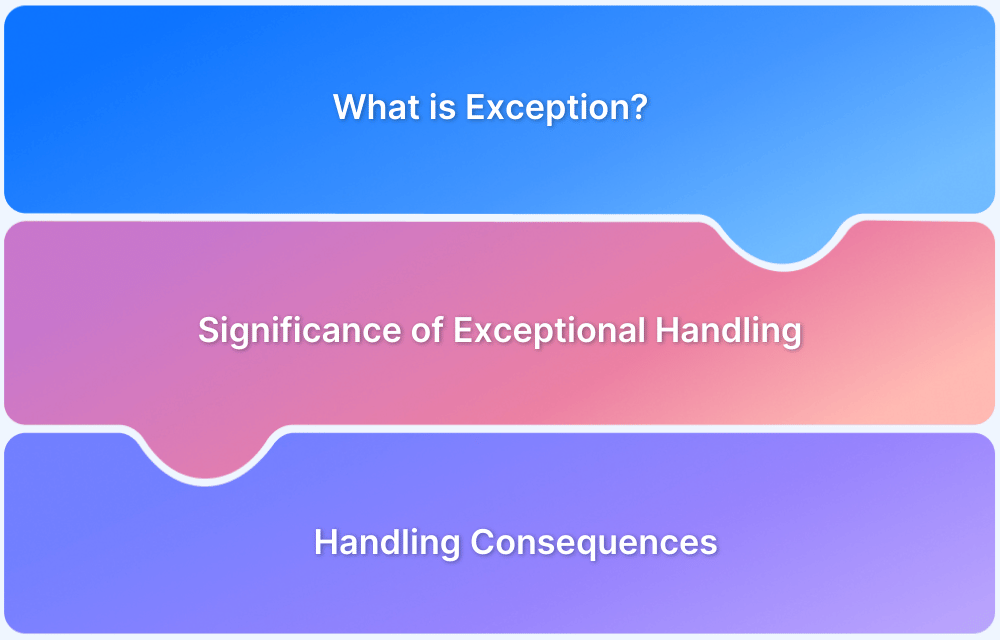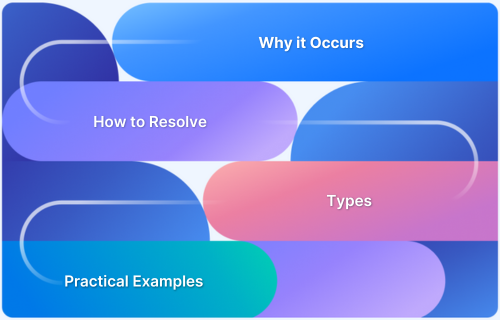Automation allows developers to test, debug, and refine their applications, but even the best scripts can hit snags in the most unexpected ways. If you are working with Selenium WebDriver, you might get the AttributeError: module ‘selenium.webdriver’ has no attribute ‘PhantomJS’ error. This error often trips up developers who rely on older headless browsers or are transitioning to updated tools.
With PhantomJS, now deprecated on Selenium 4, developers are forced to get used to newer, robust, headless browsers.
Overview
What is ‘AttributeError: No Attribute PhantomJS’ in Selenium?
This error occurs because PhantomJS is deprecated and no longer supported in the latest Selenium versions. Selenium WebDriver has removed it in favor of modern headless browsers like Chrome and Firefox for better stability and support.
How to Fix ‘AttributeError: No Attribute PhantomJS’ Error?
- Switch to Headless Chrome or Firefox – Use modern headless browsers instead of PhantomJS for reliable automation.
- Downgrade to an Older Selenium Version – Install Selenium 3.3.0 to retain PhantomJS support (not recommended due to security risks).
- Use a PhantomJS Fork – Some unofficial forks exist, but they lack active support and may cause compatibility issues.
This blog outlines why this kind of error occurs and guides you on how to solve it so that you can run the tests smoothly.
Understanding the ‘AttributeError: No Attribute PhantomJS’ Error
The “AttributeError: module ‘selenium.webdriver’ has no attribute ‘PhantomJS’ error” occurs because PhantomJS is deprecated and no longer supported in the latest versions of Selenium. PhantomJS was a headless browser used to automate web page interactions, but its development was suspended in 2017.
Therefore, Selenium WebDriver has removed support for PhantomJS since it supports modern headless browser solutions like Chrome and Firefox in headless mode.
When attempting to use PhantomJS with a recent version of Selenium, you might encounter the following error message:
AttributeError: module 'selenium.webdriver' has no attribute 'PhantomJS'
This message indicates that the PhantomJS attribute is no longer available in the Selenium.webdriver module.
As the latest Selenium doesn’t support PhantomJS, you can perform successful headless browser testing with Selenium using BrowserStack.
Read More: Exception Handling in Selenium WebDriver
How to Fix the ‘AttributeError: No Attribute PhantomJS’ Error
As the latest Selenium latest versions have stopped supporting PhantomJS, you can’t use that for headless browser testing. To resolve this issue, consider the following solutions:
1. Switch to Headless Chrome or Firefox
Modern headless browsers like Chrome and Firefox offer robust support and are actively maintained, making them excellent alternatives to PhantomJS. Here’s how you can implement headless Chrome in your Selenium scripts:
from selenium import webdriver
from Selenium.webdriver. Chrome.service import Service
from Selenium.webdriver. Chrome.options import Options
# Set up Chrome options for headless mode
chrome_options = Options()
chrome_options.add_argument("--headless") # Run in headless mode
chrome_options.add_argument("--disable-gpu") # Disable GPU acceleration (Windows-specific)
# Specify the path to the ChromeDriver executable
service = Service('/path/to/chromedriver') # Replace with the correct path to chromedriver
# Initialize the WebDriver with the specified options
driver = webdriver.Chrome(service=service, options=chrome_options)
# Navigate to a webpage
driver.get("http://www.example.com")
# Perform your web automation tasks here
# Close the browser
driver.quit()Steps to implement the above code and use Chrome headless browser are:
- Install ChromeDriver: Ensure that ChromeDriver is installed and its path is correctly specified in the Service object.
- Configure Chrome Options: The Options class allows you to set various parameters, such as running Chrome in headless mode.
- Initialize the WebDriver: Create an instance of webdriver.Chrome with the specified service and options.
- Perform Web Automation: Use the driver object to interact with web pages as needed.
- Terminate the Session: Always call the driver.quit() to close the browser and end the WebDriver session properly.
2. Downgrade to an Older Version of Selenium
If using other headless browsers is not an option and you want to stick to PhantomJS due to your code and testing requirements, there is another workaround. You can revert to an earlier version of Selenium that still includes support for it. However, this approach is generally discouraged due to potential security vulnerabilities and lack of support.
First, downgrade the Selenium version.
pip uninstall Selenium
Install Selenium Version 3.3.0:
pip install selenium==3.3.0
Now, you can use PhantomJS in your code:
from selenium import webdriver
# Initialize the PhantomJS WebDriver
driver = webdriver.PhantomJS(executable_path='/path/to/phantomjs') # Replace with the correct path to PhantomJS
# Navigate to a webpage
driver.get("http://www.example.com")
# Perform your web automation tasks here
# Close the browser
driver.quit()Using outdated software versions can expose your project to security risks and compatibility issues. It’s advisable to transition to supported tools and technologies to ensure the stability and security of your automation scripts.
3. Use a PhantomJS Fork
Given that PhantomJS is no longer maintained, some forks or alternative projects have emerged to fill this gap. However, integrating such forks with Selenium can be complex and may not provide the same level of reliability or support as mainstream browsers.
It’s generally more practical to adopt well-supported headless browsers like Chrome or Firefox, as they offer better performance, security, and community support.
By implementing one of these solutions, you can resolve the AttributeError related to PhantomJS and continue with your web automation tasks effectively.
Alternatives to PhantomJS for Headless Browsing
With the deprecation of PhantomJS, developers have looked towards other modern and maintained headless browser solutions. Some of these alternatives include:
1. Headless Chrome
Headless Chrome was first introduced in Chrome 59 and can be run in a headless environment to enable automated control without a graphical user interface. This could be used for web scraping, automated testing, and rendering of web pages.
It provides better speed stability and support than PhantomJS.
| Pros | Cons |
|---|---|
| Actively maintained with regular updates | Resource usage is a bit more than lightweight headless browsers
|
| Supports a wide range of web features and modern web standards | |
| Easy debugging capabilities | |
| Integration with tools like Puppeteer for better automation |
2. Headless Firefox
Firefox, from version 56, has a headless mode. This means that the developers can run Firefox without the graphical interface. This mode is useful for automated testing and web scraping.
| Pros | Cons |
|---|---|
| Supports modern web standards | May be a bit slower than Headless Chrome |
| Regularly updated and maintained | |
| Compatible with many automation tools |
3. Puppeteer
Puppeteer is a Node library developed by Google that provides a high-level API to control Chrome or Chromium over the DevTools Protocol. It is widely used for web scraping, automated testing, and generating PDFs of web pages.
| Pros | Cons |
|---|---|
| It provides a rich API for browser automation | Primarily designed for Node.js environments; not directly usable with Python |
| It supports headless and headful modes | |
| It is actively maintained with a large community |
4. Playwright
Developed by Microsoft, Playwright is a Node.js library that enables automation of web browsers with a single API. It supports multiple browsers, including Chromium, Firefox, and WebKit, and is suitable for end-to-end testing and web scraping.
| Pros | Cons |
| Supports multiple browsers and platforms | Mainly meant for Node.js environments; extra setup needed in other languages |
| Provides a comprehensive API for browser automation | |
| Actively maintained with regular updates |
5. Selenium
Selenium is one of the most used testing tools on browsers. Even though it initially necessitated a GUI, headless modes for most browsers, especially Chrome, are available.
Selenium supports headless browser tests, enabling test cases without showing the browser window. Several drivers, including Headless Chrome, Headless Firefox, and HtmlUnitDriver, can be utilized.
| Pros | Cons |
|---|---|
| Supports multiple programming languages | Additional setup may be required for headless mode. |
| Supports multiple browsers | Potential performance overhead compared to specialized tools |
| Extensive community support and documentation |
Factors to consider when choosing Alternatives
For projects that need headless browser testing, pay attention to the following before choosing one:
- Project Requirements: Assess the particular needs of your project, including its compatibility with a language, browser support, or performance requirements.
- Community and Maintenance: Consider actively maintained tools with a rich community for enhanced support and longevity.
- Ease of Integration: Consider the ease with which the tool would integrate with your project’s existing workflow and testing frameworks.
By considering these aspects, you can choose the best headless browser alternative to PhantomJS for your automation and testing purposes.
Common Mistakes and Troubleshooting Tips for ‘AttributeError: No Attribute PhantomJS’ Error
This AttributeError: module ‘selenium.webdriver’ has no attribute ‘PhantomJS’ error is very common among developers who have switched to newer versions of Selenium. To solve this problem efficiently, here are some common mistakes and their corresponding solutions:
Using Deprecated Selenium Versions
PhantomJS support was removed in Selenium 4. Attempting to use webdriver.PhantomJS with this version results in an AttributeError.
Verify your Selenium version.
pip show -V selenium
or
pip show selenium
If you’re using Selenium 4 and require PhantomJS, consider downgrading to a version that supports it, such as Selenium 3.3.0. For this, you can uninstall the current version and install the older version. However, be aware that this is not recommended due to potential security vulnerabilities and lack of support.
pip uninstall Selenium pip install selenium==3.3.0
Read More: Selenium 3 vs Selenium 4: Core Differences
Incorrect WebDriver Attribute Usage
Attempting to instantiate PhantomJS using webdriver.PhantomJS in Selenium 4 leads to an AttributeError because the attribute no longer exists.
Update your code to use supported headless browsers like Chrome or Firefox.
Missing or Incorrect WebDriver Executable Path
Specifying an incorrect path to the WebDriver executable can lead to errors during instantiation.
Ensure that the path to the WebDriver executable (for example, Chromedriver or Geckodriver) is correct and that the executable has the appropriate permissions. On Unix-based systems, you can adjust permissions using:
chmod +x /path/to/webdriver
Environment Configuration Issues
Environment variables or system paths not configured correctly can prevent Selenium from locating the necessary WebDriver executables.
Add the directory containing your WebDriver executable to your system’s PATH environment variable. This allows Selenium to locate the driver without specifying the full path.
Lack of Testing After Changes
Failing to test your application after making changes can lead to unresolved errors and degraded functionality.
Implement a robust testing strategy to verify that your application works as intended after any modifications, especially when updating dependencies or refactoring code.
Best Practices for Headless Browser Testing
Headless browser testing enables automated web application testing without a graphical user interface, which is a significant improvement in efficiency and integration into CI/CD pipelines. To get the most out of headless browser testing, follow these best practices:
- Selecting the Correct Headless Browser: Based on your test environment, select appropriate headless browsers. Among those, the ones that support modern web standards well and are actively maintained are headless Chrome and Firefox.
- Keep the browser and driver versions aligned: This ensures that the version of your browser and the driver are the same, thus eliminating compatibility issues. For example, if you’re using Chrome version 94, the ChromeDriver should also be version 94.
- Implement Visual Regression Testing: Add visual regression testing by taking screenshots for critical points inside your tests. Compare them against baseline images taken earlier. Visual regression testing catches unexpected user interface changes that functional tests probably missed.
- CI/CD Integration: Use the headless browser testing within the CI/CD pipeline to perform automated testing activities. This reduces the time required to provide quick and consistent feedback during application development and deployment.
- Monitor Resource Consumption: Headless test executions should be monitored regularly for CPU and memory usage to identify and address potential performance bottlenecks. Efficient resource management contributes to faster and more reliable tests.
- Handle Dynamic Content Effectively: Implement appropriate wait strategies to manage dynamic content loading, ensuring that your tests interact with elements only after they are fully rendered. This practice enhances test reliability and accuracy.
- Maintain Detailed Logging and Reporting: Ensure detailed logging captures test run information to aid easier identification of problem areas and subsequent rectification. Complete reports present details of how the tests are executed and where fixes may be required.
- Cross browser Testing. Running headless testing in different browsers allows verification that an application works and renders in a predictable fashion, uniformly on any platform or device.
Read More: Best Practices for Selenium Test Automation
Why run Selenium with Python Tests on Real Devices?
Testing on real devices will ensure your application delivers the best experience on a wide range of users and browsers.
Real devices give critical insight into how your app behaves in real-world conditions, thus showing issues that an emulator or simulator might not be able to notice.
Here’s why it matters:
- Real-World Accuracy: Real devices account for the actual variations of hardware and software, resulting in authentic test results.
- Comprehensive Coverage: You can test compatibility across multiple screen sizes, resolutions, and operating systems.
- Precise Metrics: Real devices provide accurate data on speed, responsiveness, and resource use.
BrowserStack Automate makes it easy to run Selenium tests with Python on a wide range of real devices and browsers. Here’s how it simplifies and enhances testing:
- Comprehensive Device and Browser Test coverage: Testing is done on over 3500+ real devices and browsers, including the latest versions of Chrome, Safari, and Firefox.
- Parallel Testing: Run tests across different combinations and save time for testing.
- Integration with CI/CD Tools: Seamless integration of BrowserStack Automate with CI/CD tools speeds up your development pipeline.
- Live Debugging Tools: Real-time logs, screenshots, and video recordings help identify and address issues quickly.
- Scalable and Hassle-Free: No need for a physical device lab; access everything on the cloud, on demand.
Getting Started with BrowserStack Automate
To start automation testing with BrowserStack, follow these steps:
Step 1. Create an account and retrieve your access credentials.
Step 2. Update your Selenium scripts to connect to BrowserStack using the provided credentials.
Step 3. Define the devices and browsers for your test cases.
Step 4. Execute your tests and review detailed reports for actionable insights.
BrowserStack Automate provides all the tools to ensure your web application runs smoothly on all devices. Its extensive features save you time, improve reliability, and keep the release cycle faster without managing a physical device lab.
Conclusion
Adapting to changing environments is critical while working with evolving tools such as Selenium WebDriver. The deprecation of PhantomJS is one factor calling for new, robust alternatives.
The use of headless Chrome or Firefox is future-proof, while downgrading to an older version of Selenium or even checking forks may be used in the short term. Be proactive by keeping up with the latest updates and ensuring your tools are current.
Automate your testing process using BrowserStack Automate. Get access to 3500+ real device-OS-browser combinations, run parallel tests, and integrate perfectly with your CI/CD pipeline without managing physical hardware.








